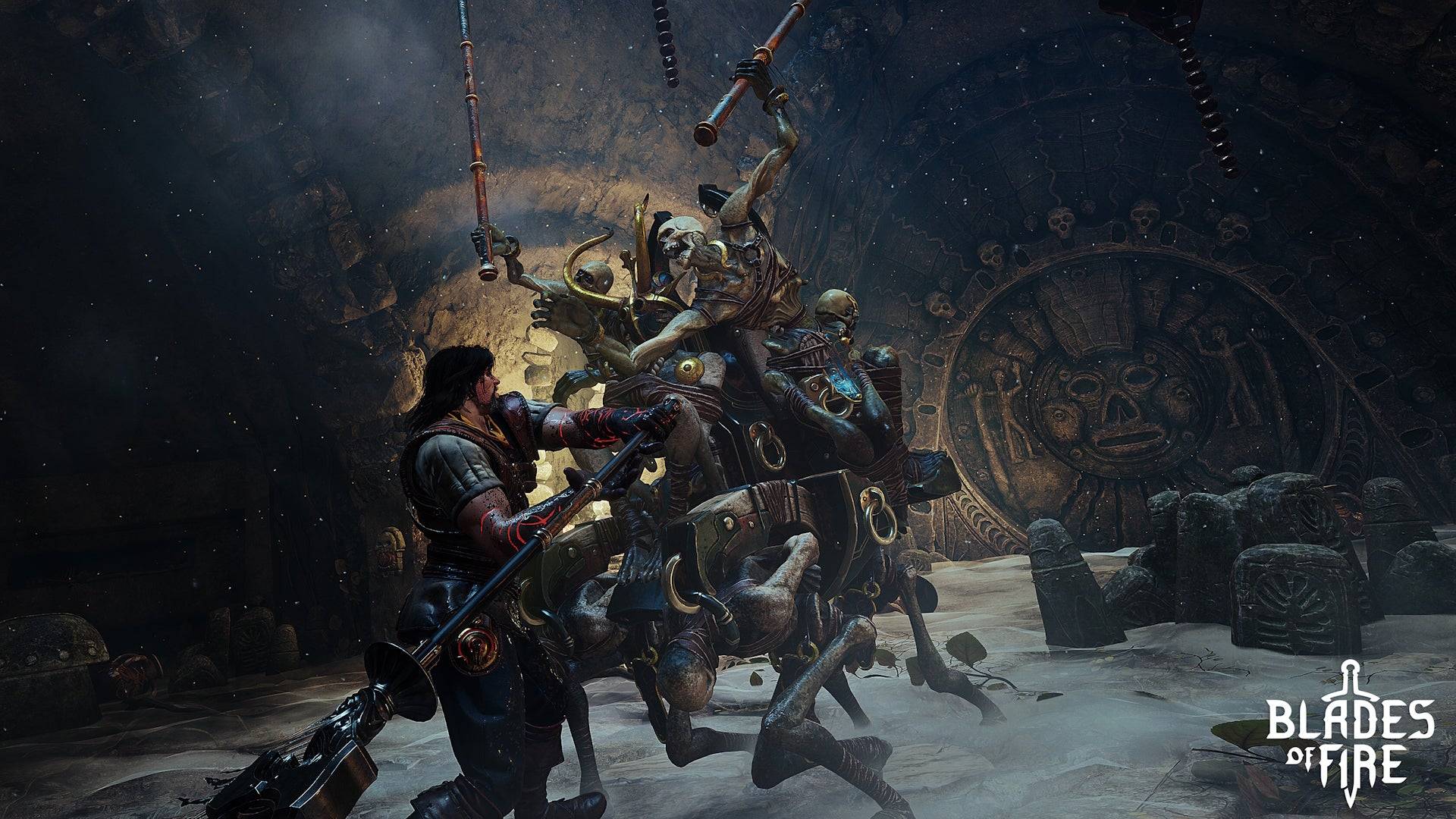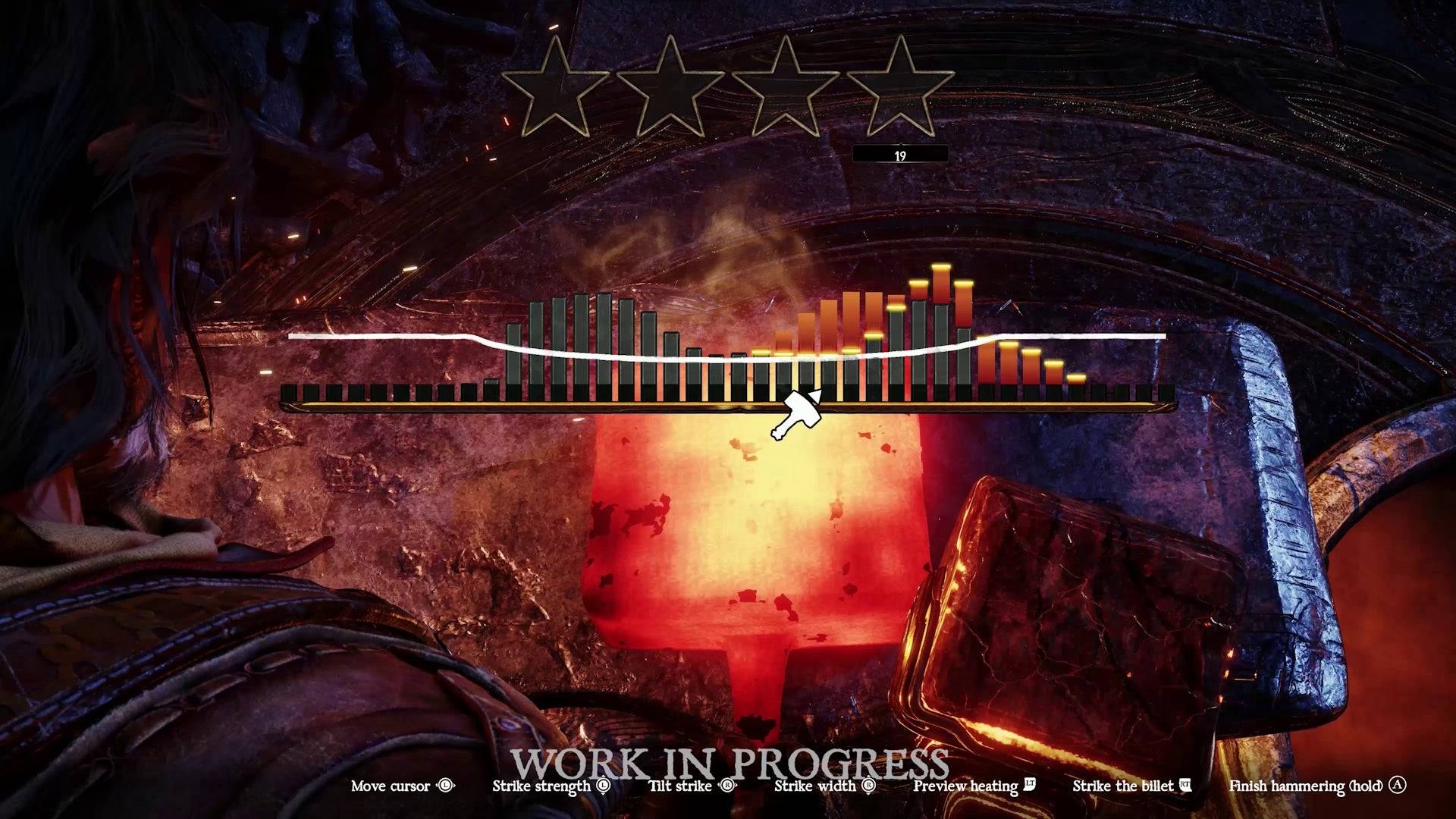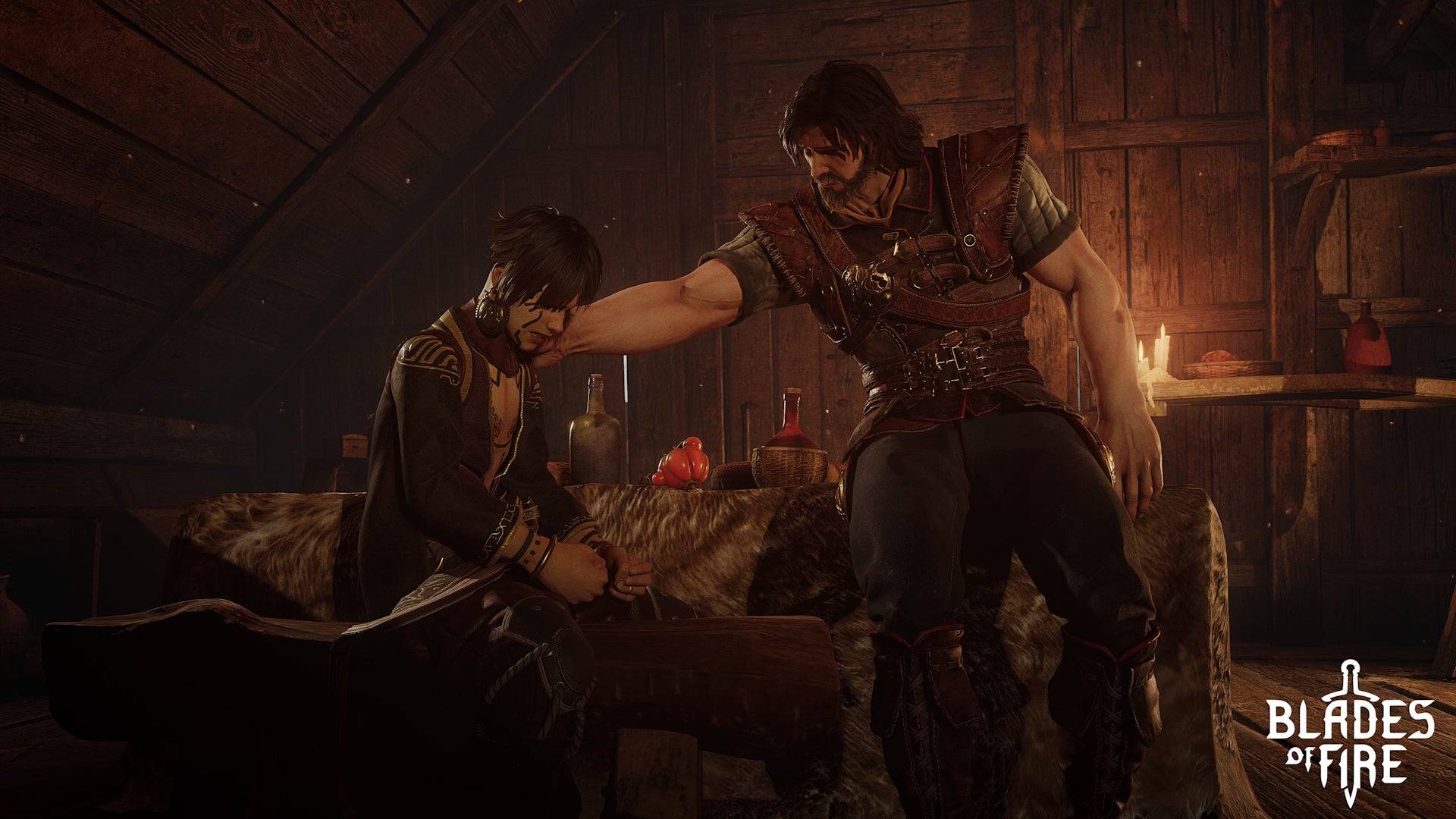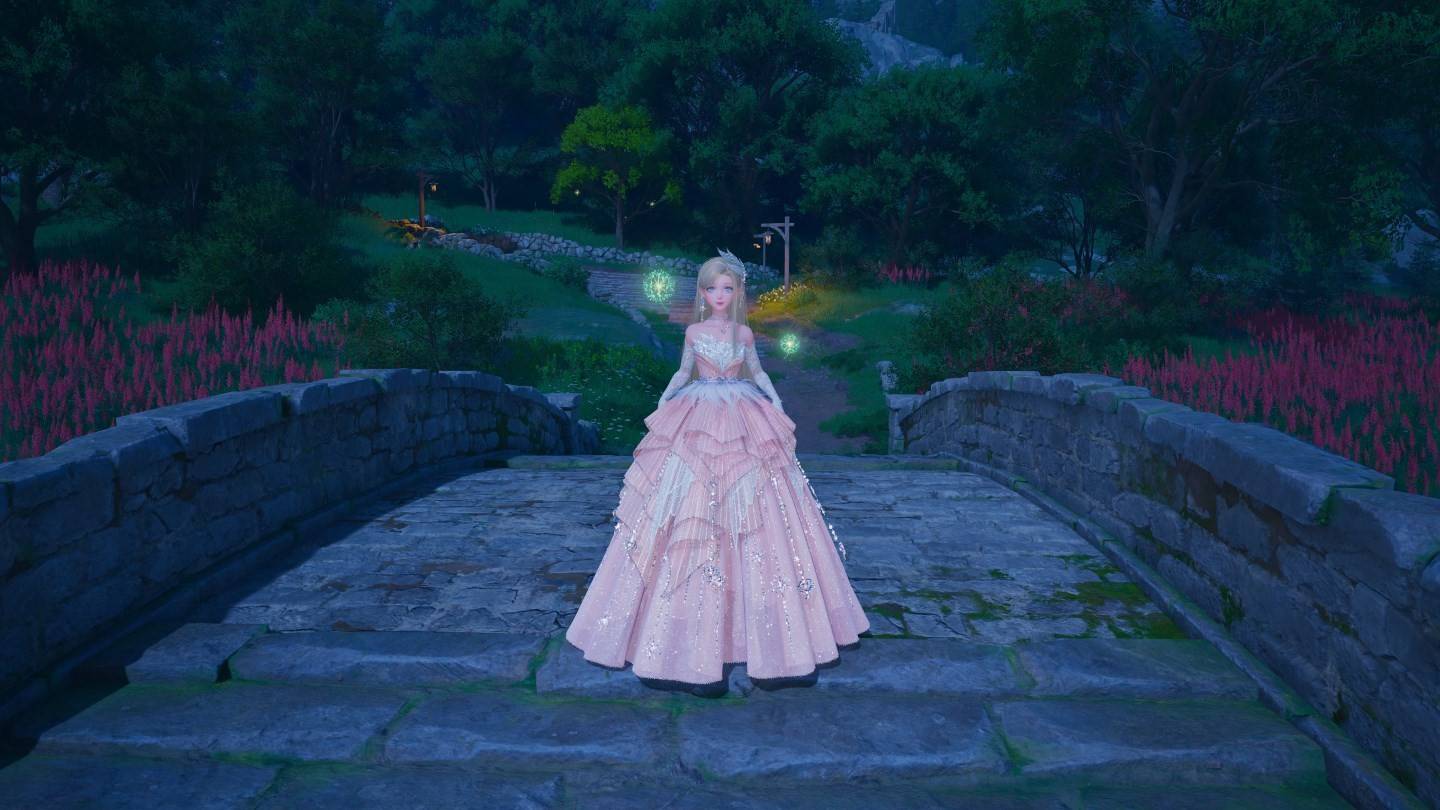by Lucy May 05,2025
When I sat down to play developer MercurySteam's latest project, Blades of Fire, I expected something reminiscent of the studio's Castlevania: Lords of Shadow games, but with modern touches akin to God of War. An hour into the game, I felt like I was navigating a Soulslike, albeit one where the focus was on weapon stats rather than traditional RPG character progression. By the end of a three-hour hands-on session, I realized that both these impressions were partially correct and partially misleading. Blades of Fire is built on familiar ground, yet it masterfully blends its borrowed elements with innovative concepts, resulting in a fresh and engaging take on the action-adventure genre.
At first glance, Blades of Fire might seem like a clone of Sony Santa Monica's God of War, thanks to its dark fantasy setting, heavy-hitting combat, and a third-person camera that keeps you close to the action. There are numerous similarities, such as exploring a winding map filled with treasure chests alongside a young companion who aids in solving puzzles. Together, we sought out a woman of the wilds living in a house mounted on a giant creature. The game also draws heavily from FromSoftware's library, with anvil-shaped checkpoints that not only refill your health potions but also respawn enemies.
 Blades of Fire features some deeply strange enemies that feel like dark cousins of Labyrinth's puppets. | Image credit: MercurySteam / 505 Games
Blades of Fire features some deeply strange enemies that feel like dark cousins of Labyrinth's puppets. | Image credit: MercurySteam / 505 Games
The world of Blades of Fire evokes the aesthetic of 1980s fantasy, where you can imagine Conan the Barbarian mingling with its muscular soldiers, and bizarre orangutan-like enemies bouncing on bamboo pogo sticks reminiscent of Jim Henson's Labyrinth. The narrative also carries a retro vibe, centered around an evil queen who has turned steel into stone, and it's up to you, Aran de Lira, a blacksmith demigod, to defeat her and restore the world's metal. While the setting has old-school charm, I'm skeptical about the story, characters, and writing holding my interest long-term; it feels very video game-y, akin to many forgotten tales from the Xbox 360 era.
The true strength of Blades of Fire lies in its mechanics. The combat system revolves around directional attacks utilizing every face button on the controller. On a PlayStation pad, tapping triangle targets the head, cross aims at the torso, while square and circle swipe left and right. Reading an enemy's stance carefully allows you to break through defenses. For instance, a soldier shielding their face can be defeated by aiming low and piercing their gut, with satisfyingly visceral effects as blood spurts from the wounds.
The demo's first major boss, a slobbering troll, highlighted the system's potential. It had a secondary health bar that could only be depleted after dismembering the beast. The limb removed depends on your attack angle, so a right-hand strike could detach its left arm, disarming it. Even more intriguing, you can slice off the troll's entire face, leaving it blind and flailing until it regenerates its eyes.
Your weapons in Blades of Fire demand significant attention, unlike most games. They dull with repeated use, reducing damage incrementally with each strike. You'll need to use a sharpening stone or switch stances, as the edge and tip wear independently. When a weapon shatters, you can repair it at an anvil checkpoint or melt it down to craft anew, introducing the game's most distinctive feature: the forge.
MercurySteam's weapon crafting system is exceptionally detailed. Rather than finding new weapons, you start with a basic template, sketched on a chalkboard by Aran. You can tweak various aspects, like adjusting a spear's pole length or spearhead shape, which impacts the weapon's stats and stamina demands. This process gives you the feeling of truly crafting your weapon, and you can even name your creation.
The crafting journey doesn't end there. You must then forge the weapon physically on an anvil through a minigame where you control the length, force, and angle of each hammer strike. The goal is to match a curved line on the screen using vertical bars, akin to a graphic equalizer, in as few strikes as possible to avoid weakening the steel. Your performance earns a star rating, affecting how often you can repair the weapon before it breaks permanently.
 The forging minigame is a great concept that feels a bit too complex. | Image credit: MercurySteam / 505 Games
The forging minigame is a great concept that feels a bit too complex. | Image credit: MercurySteam / 505 Games
I appreciate the forge's concept and how it adds a skill element to what's typically a menu-driven system. However, the minigame felt frustratingly complex even after multiple attempts. I hope for improvements or a better tutorial before launch, as it would be a shame if this innovative feature were hindered by confusion.
The forge's concept extends beyond the demo's scope. MercurySteam aims for you to form a deep attachment to your crafted weapons, carrying them throughout a journey they claim will last "no less than 60-70 hours." As you explore and find new metals, you can reforge your weapons to enhance their properties, ensuring they remain effective against tougher challenges. This bond is reinforced by the death system; upon defeat, you drop your weapon and respawn without it, but it remains in the world for you to recover.
MercurySteam's adoption of Dark Souls-inspired mechanics is no surprise, given FromSoftware's influence on action games and Blades of Fire's connection to Blade of Darkness, a precursor to the Souls series developed by the studio's founders. Blades of Fire feels like a continuation of their earlier work, enriched by advancements from other studios during their hiatus from the genre.
 Aran is joined by his young companion, Adso, who can help solve puzzles and comment on the world's lore. | Image credit: MercurySteam / 505 Games
Aran is joined by his young companion, Adso, who can help solve puzzles and comment on the world's lore. | Image credit: MercurySteam / 505 Games
Throughout my playthrough, I felt the pull of MercurySteam's various influences—the brutal combat of their early work, FromSoft's innovations, and God of War's world design. Yet, these elements do not define Blades of Fire. Instead, they are reinterpreted into a unique blend that distinguishes the game from its inspirations.
I have some concerns about the game's fairly generic dark fantasy setting and its ability to sustain a 60-hour adventure, especially after encountering the same miniboss multiple times within three hours. However, the deep relationship between your forged weapons and the enemies you face is genuinely intriguing. In an era where complex games like Elden Ring and Monster Hunter have become mainstream successes, Blades of Fire has the potential to offer something captivating to the gaming community.
Mobile Legends: January 2025 Redeem Codes Released
Pokemon TCG Pocket: Paralyzed, Explained (& All Cards with ‘Paralyze’ Ability)
Android Action-Defense
Brutal Hack And Slash Platformer Blasphemous Is Coming To Mobile, Pre-Registration Now Live
Pokémon TCG Pocket Is Dropping a Trade Feature and Space-Time Smackdown Expansion Soon
Mythical Island Debuts in Pokemon TCG, Time Revealed
GWENT: Top 5 Decks for 2025 - Strategies Revealed
Marvel Rivals Showcases New Midtown Map

When I was reincarnated
Download
Fairy Evolution: Magic Idle
Download
Pocket Journey (Unreleased) by Maryanne Adams
Download
Labo Christmas Train Game:Kids
Download
Lucky Lady's Charm Deluxe Slot
Download
Vô Cực Đại Chiến
Download
Lunch with Ronan mod
Download
Diamond Deluxe Casino - Free Slot Machines
Download
Shopping Mall 3D Mod
Download
Blue Archive launches Radiant Moon event with new characters
Dec 26,2025

Eterspire's 2023 Update Adds Snowy Vestada and Controllers
Dec 26,2025

Infinity Nikki: Top Fashion Duel Strategies
Dec 25,2025
EA Retires Origin Platform, Affects Users
Dec 25,2025

Pikmin Bloom Earth Day Walk Party Begins
Dec 24,2025